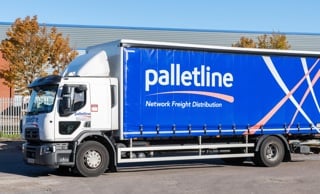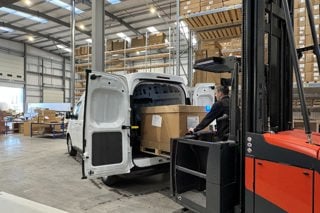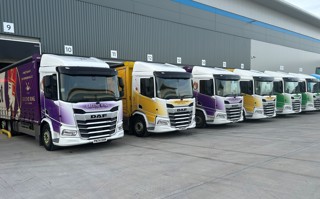By Lee O’Neill, operations director at Venson Automotive Solutions
Procuring vans will take up a major part of a business's budget, so it’s important to choose the right vehicles from the outset.
While new vehicles come with the promise of maximising payload efficiency and getting the job done effectively, unless vehicles meet operational needs, businesses could be waiting some time for their return on investment.
It is essential that drivers also know how to load vehicles safely, and that they understand the weight limit of their specific vehicle.
The latest figures from the Driver and Vehicle Standards Agency (DVSA) revealed that overloading is the number one offence committed by van drivers, with an average fine of £1,670. This clearly demonstrates the potential financial impact of poor loading.
Business requirements change, and in the current unpredictable market these changes can be significant even in between fleet refreshes, meaning businesses may not be driving the most efficient vehicles for their requirements.
Check what you need
Fleet managers should regularly reassess the type, size, loading options, payload and drivetrain of their fleet vehicles.
Reviewing this information alongside the type and size of products to be carried as well as the type and frequency of journey helps to accurately assess what the actual requirements are from the vehicle.
Get everything laid out that you think you need to carry. Separate out what you must carry from what you would like to carry.
Of the have-to-have items, re-assess and see if there is anything you don’t need, for example you may be looking at an item of stock that has been superseded or a tool that only has one use where you have another that could cover that use and others.
These simple tasks can help you to get where you need to be, the kit you need a van to carry, not what’s always been carried.
Check what you’ve got
Once the requirements are confirmed, the current fleet should be reviewed just as carefully. Does it still meet business requirements, or could the fleet benefit from some or all vehicles being replaced with alternatives?
What was chosen three or even four years ago may not be suitable today, or for the next three years.
At the most basic level, vehicles must be large enough to carry the necessary load, without being unnecessarily large and wasting fuel or being too large to get under any low bridges or down narrow roads on regular routes.
Next, fleet managers should look at the load length, height, width and weight, as well as the load area access for the vehicle.
Depending on the business and the load it transports it could also be worth looking at any roof systems to help carry equipment.
However, be mindful of the weight limits stated by the manufacturer. It is important to have a full understanding of the vehicle’s physical dimensions in relation to what needs to be transported – not getting fixated on making sure the biggest bit of equipment will fit, but making sure there is room for everything.
Vehicle and load
The right vehicle for the load is the best start, but it is not a miracle solution on its own.
Items need to be properly loaded and secured to ensure safety in the vehicle and for the driver and be legally road compliant.
Those loading the vehicle must be aware of the accurate payload of the vehicle – this can differ from the published figure depending on what the manufacturer includes in the weight calculations.
Any optional extras ordered on the base vehicle may not be included and will need adding to calculations. Once these calculations are complete an accurate maximum load weight can be established.
To help further, fleet managers should consider fitting on board weighing as part of the conversion requirement, especially if loads constantly change or are regularly close to the payload limit.
Securing the load is the next big challenge. Depending on the nature of the goods being transported, there are numerous ways of securing containers, boxes, or livestock.
Vehicles should include suitable crash-tested racking, anchor points and suitable lashing straps as well as drawers for delicate items or expensive equipment.
Of course, heavier items should be loaded first, lower down in the vehicle, with lighter items on top and on higher racking to avoid items being crushed or toppling over.
If load types vary regularly, flexible storage such as dropdown shelving could ensure storage is efficient and the load area is fully accessible when shelving is not required.
Carrying special items such as fuel, chemicals, gas etc. can require special measures and storage solutions. Vehicles may need gas lockers, signs on the exterior of the vehicle, additional venting to the load area, bunded areas and robust securing methods, among others.
When transporting animals, vehicles will need to be converted by a specialist to ensure they are transported safely and vehicles meet all relevant regulatory requirements.
Check the boxes
Once the vehicles are fully kitted out and drivers trained in safe, compliant and efficient loading, there are still some boxes to tick. The importance of suitable security and insurance should not be underestimated, and shortcuts should not be taken.
We all know that there’s someone out there that thinks what’s yours is theirs and will do anything they can to take it. Businesses must ensure they have the right level of security and insurance for all vehicles and the equipment they carry.
Investing time to carry out a few simple checks, and implement suitable policies, can help businesses protect their fleets drivers and their items from the risk of injury, damage, losses and fines.




















Login to comment
Comments
No comments have been made yet.